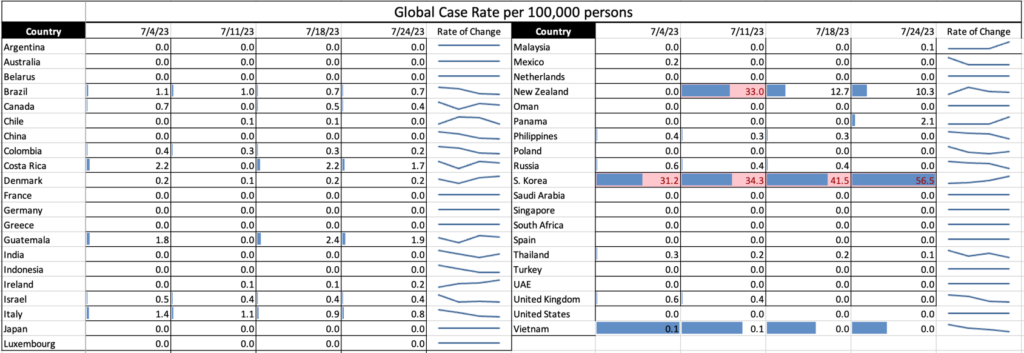The changing climate has had impacts on the food industry in numerous ways. While the impacts of severe weather on crops are well-known, there are many other less straightforward ways that the weather is impacting the industry.
Take, for instance, the outbreak of gastroenteritis in Cyprus that is causing emergency rooms to overflow, which is being attributed primarily to the prevailing extreme heat. While the outbreak is not only caused by the heat, a vast number of the cases are from food poisoning as a “result of people consuming food that is not properly treated in high temperature conditions. Depending on how susceptible an organism is we see these food poisoning symptoms,” specialist in gastroenterology and hepatology, George Potamitis, said.
Wherever one is in the food supply chain – from farmer to consumer – time/temperature control is critical for food safety, particularly in the record high temperatures being reached across the globe these days. Thus, it is essential that this, and other weather conditions, be taken into consideration in assessing one’s food safety practices and adapt processes to the conditions. This is because, as explained in a recent article from FoodSafety.gov, while perishable food can generally be safely left out for about two hours, “hot and humid weather creates an ideal environment for bacteria to grow even more quickly.”
Thus, when outside temperatures rise above 90°F, food is only safe outside for one hour.
To help combat the impacts of heat, the article provides five “cool” tips for food safety, including (in brief),
- Use extra cold sources to keep foods cool when serving food outdoors.
- Pack coolers tightly, as full coolers keep the food colder.
- Keep the cooler closed, take out only what is needed at a time, and put drinks in a separate cooler.
- If food has been out longer than is safe, toss it. In this case, it is best to follow the adage, “if in doubt, throw it out” to avoid later consumer food poisoning.
- If your food is being delivered, be sure it is being transported in temperature controlled conditions.
For the full tips and explanations, visit the FoodSafety.gov webpage – and give TAG a call should you have other questions or need assistance.
COVID Risk Matrix:

Influenza:


Infectious Disease News:
- WHO issued a risk assessment on Peru’s GBS cases which said more investigations are needed to determine the cause. The country typically reports fewer than 20 cases of GBS per month, but between June 10 and July 15, 130 suspected cases were reported, of which 44 were confirmed.
- Florida Department of Health reported two more locally acquired cases of dengue fever, raising the year’s total to five. All individuals have been from Miami-Dade County.
- In other Florida news, officials have reported the first case of Eastern equine encephalitis (EEE) this year, which the state typically only records one or two human cases each year.
- During the COVID-19 pandemic there was a rise in STIs. The WHO released new guidance updates to improve testing and diagnosis. The guidance update includes target product profiles for point-of-care diagnostics for syphilis, Chlamydia, N gonorrhea, and Trichomonas. A new edition of a lab manual now includes information on the use of molecular tests, rapid points-of-care tests, and quality management of diagnostic tests.
- An infection of Middle East Respiratory Syndrome (MERS)-CoV was reported in the United Arab Emirates, but it isn’t clear how it was contracted, said the WHO.
- World Hepatitis Day is on July 28. The WHO says this day provides opportunity to focus on gaps that need to be addressed in regard to hepatitis, such as low coverage of testing and treatment.





